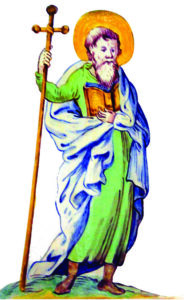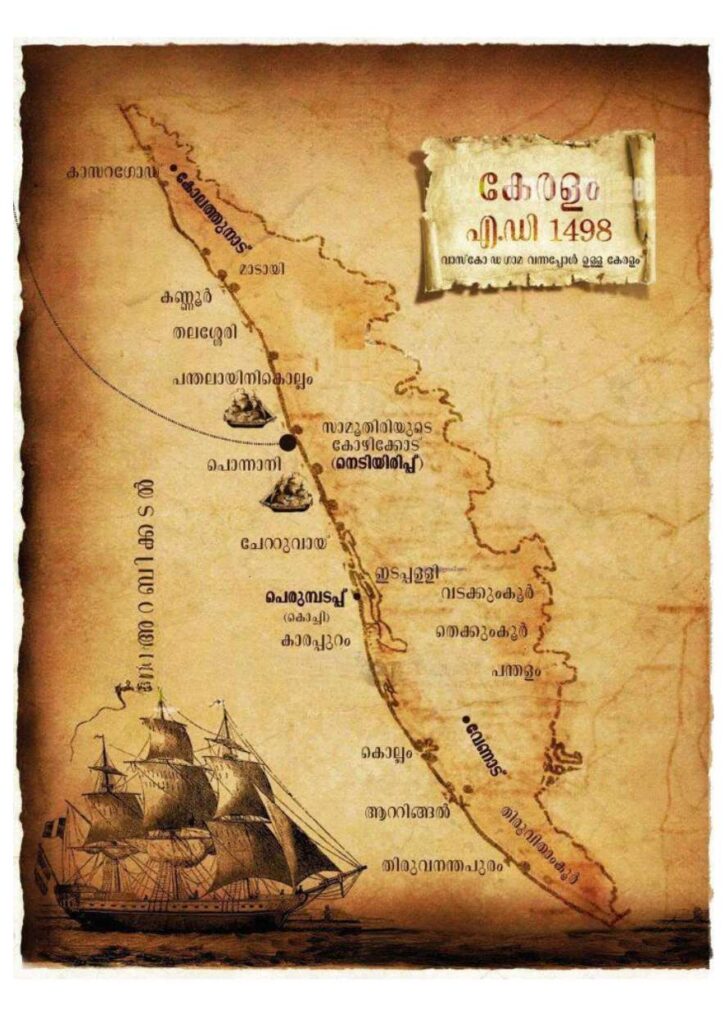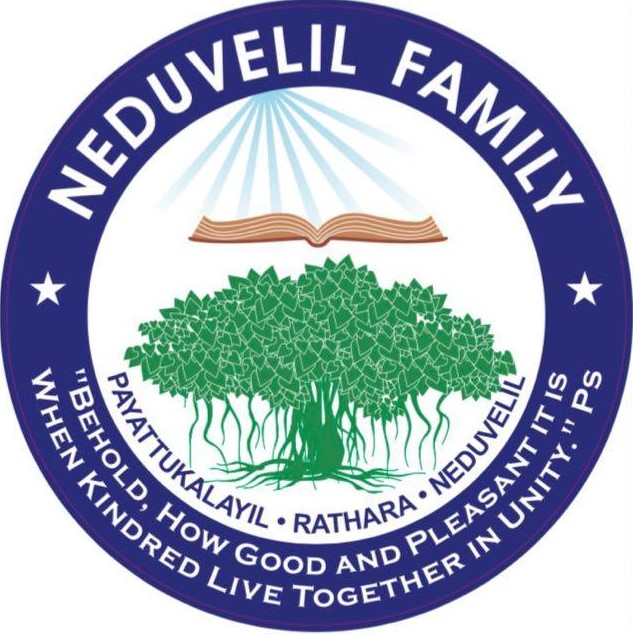Neduvelil Kudumbam

The St. Thomas Heritage
According to established tradition, St. Thomas the Apostle landed at Kodungalloor (almost certainly the same as ‘Muziris’, where intense archaeological excavations are going on now) and started preaching the Gospel. Further, it is believed that he reached Palayur, where he converted four families of Brahmins (not ‘Namboothiris’ as some would have it, for Namboothiris are Brahmins from North-Central India, who came to Kerala much later) to the new faith. It is said that the rest of the Brahmins left the village after uttering a curse (‘saapam’ in Malayalam) on it. Thus it became ‘saapakkaad’ – cursed land – from which we have the modern name of the village, Chavakkad. It has also been suggested that these first converts on the Malabar Coast were not Hindus at all, but were Jewish migrants, who had settled there much earlier and Hindu converts came in later. According to tradition, St. Thomas established seven churches in different parts of Kerala.
The Kuravilangad Origin
The descendants of the Christian families of Palayur moved to other places in Kerala at a later stage (4th century A.D. as most would like to believe, following tradition; although some historians are of the view that it was 4th century Malayalam Era (M.E.). equivalent to 12th century A.D.) This could well have been due to political reasons such as attacks from neighbouring principalities or change of rulers. Until as late as the 18th century Kerala was fragmented into several large and small states, some even smaller than a modern revenue district. There was no central authority. Skirmishes and sometimes full scale wars were common among them. The small Christian community must have fled the place to escape being caught in the crossfire.
A good number of those who left Palayur came to a place called Kuravilangadu about 20 km north of Kottayam and settled there. It is claimed that the church in Kuravilangad was originally built in the 4th century.

The St. Thomas Christians had always remained an autonomous entity within Christendom, but accepted bishops and liturgies (written in Syriac) from the patriarchates of the Middle East. This is why we are called ‘Syrian’ Christians, not because we came from ‘Syria’, which we certainly did not! The St. Thomas Christians were a single entity – with no divisions, often referred to as the ‘Malankara Church’. But this situation changed with the arrival of the Portuguese, who through the Udayamperoor (Diamper) Synod of 1599, forcibly brought the Kerala Church under the Pope, and introduced Roman Catholic beliefs and practices in it. But 54 years later, the Syrian Christians in their thousands assembled in Mattancherry (Cochin) and took a solemn oath holding on to a rope tied to a cross in front of a church as they all could not directly touch the cross. They vowed not to have anything to do with the Portuguese or the Pope anymore. The cross is said to have bent because so many people were pulling it. This incident is known as the ‘Coonankurishusatyam’ (= ‘the oath of the bent / leaning cross’). This charter of independence after half a century of submission to Roman Catholic supremacy was another milestone in the history of the church in Kerala. The revolt split the St. Thomas Christians for the first time into two groups, a small group remaining within the Roman fold and the vast majority returning to their pre-1599 independent status.
The split affected the Kuravilangad parish gravely. While the majority here sided with Rome, there were a few who staunchly resisted it. Struggles followed and eventually those who were unwilling to submit to Rome had to flee to safer places. One such was the Kallooppara – Mallappally area. A strong Christian community existed in Kallooppara. The old church there (built in the 14th century) had branched off from its mother church at Niranam, believed to have been founded by St. Thomas himself. There was no Roman presence in these areas known as Central Travancore. Belonging to the minority that resisted submission to Rome, our forefather Chacko was the head of such a family that had to flee from Kuravilangad almost 300 years ago for the sake of his faith and freedom of worship, and come to Mallappally to settle there. They worshipped in the Kallooppara church.
Our forefathers later started worshipping in the Venkalassery church in Mallappally (built in 1834) that had branched off from the Kallooppara church. The church was dedicated By Abraham Malpan, who later led the reformation movement in the Malankara Church culminating in an inevitable split and the formation of the Mar Thoma Church. Our ancestors were on the side of the reformed section; but the other section too was strong in the Mallappally parish. So the church was shared by both sections, i.e. Mar Thoma and Jacobite (Orthodox), with equal rights, and the arrangement remains so to this day.
An Interesting Story of How our Ancestor Chacko Settled in Mallappally
Chacko left Kuravilangad with his wife and children and arrived at Mallappally. After the long and tedious journey, perhaps over a couple of days, they were tired and sat down on the bank of river Manimala for rest. He had no idea about where he would set up his home and settle down in the new place. Probably he was thinking of seeking out his relatives or friends from Kuravilangad who had come to the area before him. It was at this time that he noticed a decorated boat escorted by several other boats sailing down the river in a procession with the rowers moving their oars to the rhythm of the song they were singing. Seeing it was some important person and his retinue sailing down the river, Chacko stood up and started to dance taking deft steps to the rhythm of the rowers’ song. It was the Raja of Edappally, whose territory extended to Kalloppara. Kavungumcheril Aasaan , the Raja’s chief body guard brought his boat close to the bank where Chacko was, and enquired about the stranger. Realizing that he was an expert in the martial art of Kalari Payat and was looking for a place to settle down, Aasaan immediately invited him to settle down in Mallappally. He gave Chacko and his family temporary accommodation near his house. Subsequently Chacko was given a homestead called ‘Neduvelil’, where he built his own house and took charge of the Kalari (= school for martial arts) which was there. Chacko became a famous Kalari Aasaan.
The Three Branches: Payattukala – Rathara – Neduvelil
Chacko had three sons Thommy, Idiculla and Potha and a daughter Sosamma. Thommy from Palampadam family, Kottayam married Sosamma. Idiculla’s wife Mariamma belonged to the Verunkal family in Aranmula. Since he died young, his wife and son went to Aranmula, and the Rathara branch originated there. Thommy moved to Keezhvaipur and his descendants constitute the Payattukala branch. Potha remained at Neduvelil and the branch consisting of his descendants is known by the same name.
.
